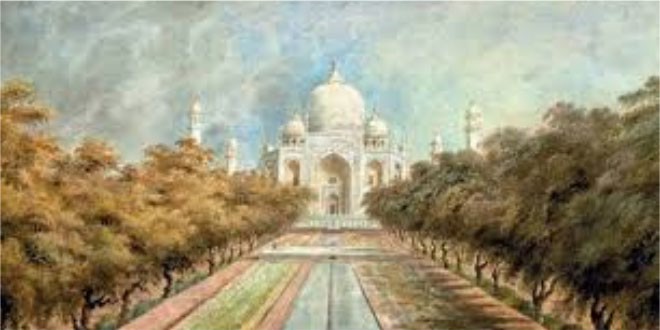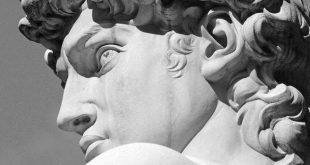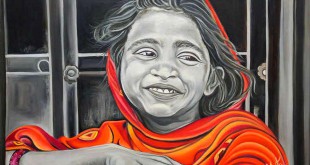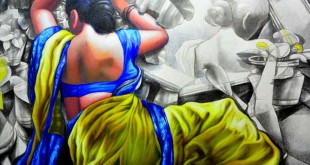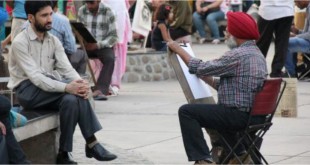There were the usual ‘scientific’ works he must have started with: studies of flora and fauna which the British were fond of commissioning and collecting as a record of their stay in this strange and different land. But, it would seem, the ways of seeing life and rendering it in the native Indian manner never truly left him. The technique that he worked in was undoubtedly western — essentially watercolour on paper — but his perceptions were informed by an inner sense of reality, by his ability to distinguish sight from insight. A rare portrait of his — not drawn by him but by some painter colleague of Murshidabad perhaps — in which one sees him, dhoti and kurta and turban clad, seated in a chair, with a western table in front, placed on which are the tools of his trade, catches the look in his eyes: not bending over the work in hand, but distant, as if he were envisioning, or dreaming something up.
This ability appears never to have left him. When he was travelling with the Hastings flotilla, he naturally kept producing ‘views’: temples by riverside, ruined gateways and mosques, bridges on boats, five-storeyed towers, small structures under large trees. Town after town swung into vision and he kept ‘recording’: places ranging from Barrackpore and Patna and Benares to Lucknow and Allahabad and Hardwar. And, of course, Delhi. There are scenes of receptions by local potentates, preceded by row upon row of caparisoned elephants; interiors of famous buildings like the Bara Imambara of Lucknow; whole cities of tents coming up on land to accommodate the enormous entourage. But every now and then, in those 12 volumes of the ‘sahib’s’ journal that he illustrated, one comes upon works which startle. For there one can see him thinking differently, breaking rank as it were. Suddenly, all those sharply observed views, precisely but rather dryly rendered, vanish and he moves into a world of his own. The brushwork, generally less tight than that employed by his Indian contemporaries, suddenly turns remarkably loose and begins to ‘speak’ in a different tongue; uncommon angles are explored; the air changes; impression triumphs over observation. In different ways, his work anticipates what followed half a century after him in a different part of the world. Sita Ram may not have been a great painter of figures, but he wanted us to see with unfettered eyes, it would seem. And there is great delight in that seeing.
 Kids Portal For Parents India Kids Network
Kids Portal For Parents India Kids Network
